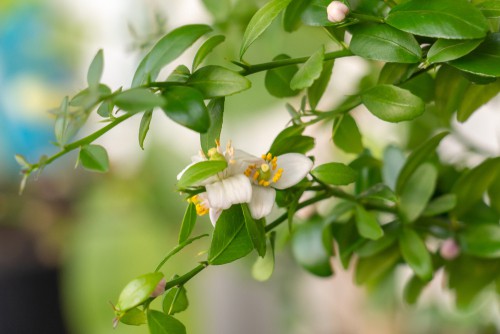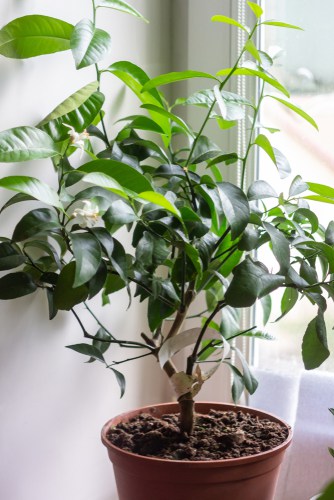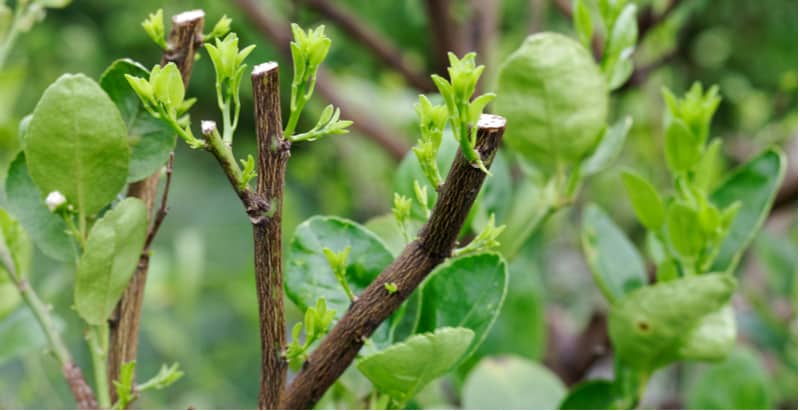Last updated on March 30th, 2022
Our site is reader supported, this means we may earn a small commission from Amazon and other affiliates when you buy through links on our site.
Lime trees are a type of citrus related to lemons and oranges. They grow on ornamental evergreen trees usually spanning between 1.5 metres and 1.8m once fully established. Lime trees are not particularly resistant to the cold weather of Britain so they work best when grown in pots and containers so that you can put them outside at the end of spring and summer and then bring them inside your home or heated a greenhouse for the winter.
Learn more about overwintering citrus trees in this guide.
It is important to note that most lime varieties are significantly less tolerant of cold than lemons or oranges. You will need to provide a bit more warmth in the winter for limes. That being said, if you are willing to go the extra mile, your lime trees will produce white, fragrant flowers as well as aromatic citrus foliage. These trees are self-fertile, so you only need to invest in one to get delightful limes.
Limes need a lot of sunlight just like any other citrus plant, but they dislike central heating and as a result, do best when grown in pots and positioned in a bright location, such as on a windowsill but not above a radiator, which is a common mistake people make.

How to Grow Lime trees in pots
Lime trees, as mentioned, need a warm, sunny place outside starting from the middle of June throughout August. They need a sheltered location that prevents damage from severe wind. In the autumn and winter, they need a well-lit position indoors, and they do best if you bring them into a conservatory or a greenhouse.
Ideal temperatures range between 10°C and 13°C in winter
Ideal temperatures range between a minimum of 10°C and 13°C. Temperatures below 10°C can cause damage to your lime tree, so try and position it in a nice bright warm room. If you have them outdoors and the temperatures look like they are going to reach those levels, you can add a layer of horticultural fleece around the plant to protect it, especially at night, however, they should really be indoors before this point.
Learn more about overwintering citrus trees in this guide.
Choosing the best compost for limes
The compost you should use is a potting compost (such as John Innes potting compost) mixed with 30% grit to improve the drainage or a ready-to-use citrus compost if you want to take the easy route.
When you first plant your lime tree, you want to find a container that is twice the size of the root ball. The material is not of particular importance. Plastic works just fine and is much lighter than wood or ceramic, which makes it easier to move in and out throughout the seasons.
Planting the lime tree into its new pot
When you plant your lime tree, fill the container with the citrus compost or the potting soil by around a third. Carefully remove the plant from its container to expose the root ball and put it in the new container so the top of the root ball is where the compost will reach. Only plant them to the depth they were in their original pot.
Next backfill the container with the remainder of the compost and firm around the edges of the pot to remove any air gaps, being careful not to compact the soil too much.

General lime tree care
It is best to purchase a new citrus lime tree in the spring or summer so that it has time to acclimate to your conditions before the onset of winter temperatures.
Watering
You should water your lime tree freely during the summer but be careful not to let it sit in water. Standing water in the container can lead to root rot. When autumn starts, reduce the frequency of watering, allowing the compost to dry out partially on the surface in between each water.
One of the most common problems people have with lime trees in pots is overwatering, especially in the winter. If possible use lukewarm water because cold water can shock the roots. It is best to water early in the morning or later in the evening to prevent evaporation.
Feeding limes
Lime trees, like all citrus trees, are voracious eaters, so they need good food. When you first plant your lime tree, you should add fertiliser and then water immediately so that the fertiliser doesn’t burn the plant. Between March and July, you should use a high nitrogen liquid feed and then switch to a balanced feed until October.
You can also buy citrus feeds, of which you can get both a summer and winter feed, so it’s important you use the right feed.
You can learn more about feeding and watering citrus trees in this guide by clicking here.
- HIGH NITROGEN CONTENT TO SUPPORT GROWTH AND IMPROVE FRUITING: Vitax Summer Citrus Feed ensures robust plant development and enhances the quality and quantity of citrus fruits like lemons, kumquats, and limes. "
- Discourages premature ripening, fruit drop and leaf discolouration
- Apply weekly from April to September
- IDEAL FOR PLANTS GROWING IN POTS OUTDOORS IN SUMMER AND INDOORS IN WINTER: Allows for flexible cultivation of citrus plants, ensuring they receive the necessary care and environment throughout the year.
- SUITABLE FOR VARYING CONDITIONS: Vitax Summer Citrus feed is suitable for citrus requiring differing climate conditions, making it a great choice for hardier lemons as well as those requiring warmer year round conditions
- Carefully balanced to maintain growth
- Helps prevent premature leaf fall and discolouration
- Apply weekly from October to March
Pruning lime trees
 citrus trees only require minimal pruning by removing overcrowded branches and leggy plants can be pruned hard by up to two thirds. learn more pruning now” class=”wp-image-33109″ width=”500″ height=”260″/>
citrus trees only require minimal pruning by removing overcrowded branches and leggy plants can be pruned hard by up to two thirds. learn more pruning now” class=”wp-image-33109″ width=”500″ height=”260″/>Lime trees can be reshaped in the winter to thin out any overcrowded branches or to cut back the tall stems which will encourage bushy lower growth. But other than this, they don’t need a lot of pruning on a regular basis. Once you have had your lime tree for a while, you can prune back the tall, leggy portion by up to two-thirds to help encourage stronger, leafy growth. Remember though that many lime trees have vicious thorns, so it’s best to wear a good quality pair of gloves.
Repotting lime trees
Every three years or so, you might have to re-pot your lime tree if it starts to outgrow its container. Only re-pot once it outgrows the existing container and re-pot it into a container that is just slightly larger than the one it was in initially. If you have to re-pot your plant, do it in the spring so it gets plenty of growing time to put out new roots before winter.
During the years that you are not repotting, you can remove the top 4cm of compost and replace it with fresh compost on an annual basis.
Harvesting
Your limes will be ready to pick when the skin has reached a deep colour. It is worth noting that they can also be left on the tree for longer if you want a more ornamental feature.
Problems
Like most other citrus trees, limes also have their fair share of possible problems from aphids, to diseases and even problems caused by overwatering.
- If the soil lacks proper nutrients or remains excessively wet, it can cause the leaves to turn yellow. We recommend feeding with a citrus feed and reducing watering, allowing the surface of the soil to dry out between waterings.
- If you are overwintering and your lime tree experiences high temperatures in the winter or otherwise low temperatures throughout the year it can cause the leaves to fall off. Again reduce watering and ensure they are not being exposed to cold, for example, in a location next to an outside door or near a window you have open in winter.
- If the flowers are falling, it could be the result of low temperatures, a lack of nutrients, erratic watering, or low light levels. Again these are all problems that can be controlled through proper care.
- If you aren’t getting a lot of fruit, it could be the result of dry compost or low humidity.
Image credits – Shutterstock.com
Last update on 2025-04-04 / Affiliate links / Images from Amazon Product Advertising API




